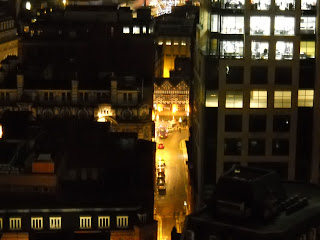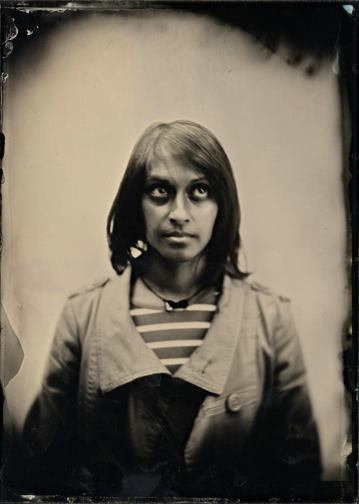Last Friday, I went on a strange sort of walking tour. It was mostly vertical.
Manchester's Town Hall is a neo-Gothic beauty, built in 1877 by Alfred Waterhouse, who also designed the Palace Hotel just minutes away on Oxford Rd. The Town Hall serves as the film double for the Houses of Parliament, so if you see The Iron Lady this holiday season, you'll see it. Hmm, it doesn't quite feel right, does it, Thatcher and the holidays?
The clock tower hadn't been open to the public for years, but they've finally put together tours of it.
This image is from the BBC, it's a detail of the clock face that I could never get a shot of with my regular camera:
The tour was fascinating. Over the whole tour, we climbed over 170 steps up a tiny spiral stone stairwell. It was a fairly harrowing climb.
Here are the ropes for pulling bells that were used more often before automation. Town Hall is one of only 25 secular buildings in the world that has a set of bells like this. I love this town.
And this is the 19th-century clock mechanism that runs the bells every half-hour and hour. Because Manchester was the first city to have a timetabled passenger train, the clock had to be extremely accurate. Like Big Ben, the Manchester Town Hall's clock is kept to within one second of GMT. George Bradshaw, also from Manchester, developed and published the first timetable compilations right here in Manchester soon after the railways started up: Bradshow's Railway Companion.
On the half-hour, we got to see some of the gears tick over and various parts rotated, and the bells rang out. It was lovely.
There is also an old Carillon that can run the bells to play music, and it still uses paper music rolls!
The Town Hall has loads of music rolls: God Save the Queen, various national anthems for visiting dignitaries, the wedding march, etc.
I was really excited to see the back of the clock face, but we were only able to see parts of it. The clock doesn't have any numbers on it, just fleur-de-lis and little rising suns, because it was inspired by some European clock towers– maybe Dutch or Flemish? Can't quite remember.
Then, we continued up some more stairs to see Great Abel, which is the Great Hour Bell. It weighs 8 ton and 2 cwt. What is cwt, you ask? It's 112 lbs, in Britain. The bell is named after Abel Heywood, the Mayor at the time of the official opening. Abel's a great character. A radical and a Chartist, he was unliked by the royalty and the establishment because early in his career, he published a super-cheap rabble-rousing newspaper, called The Poor Man's Guardian. A guy like that couldn't help but get elected in a town like Manchester back then, I suppose.
Great Abel rings out the hours, and it's such a huge bell, it doesn't move at all, so it doesn't work with a pendulum like a normal bell. It's struck by a hammer; the pendulum on Great Abel is there to absorb and reflect vibrations.
This radical city elected a radical Chartist for its mayor, named its bell after him, and inscribed this line from a Tennyson poem onto it: "Ring out the false, ring in the true." I love this town. It has other inscriptions, too, such as far more boring "Teach us to number our Days," from some Psalm.
From above, you can really see how triangular the Town Hall building is, and that there are two little internal courtyards. I love Mr. Waterhouse for his clever use of space.
And from this great height, nearly 85 meters above the city, the view from the parapet around the clock was amazing, especially because all of Manchester's holiday fairy lights are out.
And the Palace Hotel is in this one, if you look carefully:

Lovely Beetham Tower, the lonely skyscraper.
And the Albert Square Christmas Markets, from a remarkably quieter vantage point than the crowded bustle to be found on the ground. The big red bulbous thing at the bottom of the image is a lit up Santa that presides arrogantly over Albert Square. Check out this post to see what it looks like on the ground.
A fantastic tour. You should go.
Back in March, I saw more of Town Hall's interior, just wandering about. It's an astonishing beautiful building on the inside. Check out this photo album from that visit. When the Clock Tower Tour ended, I managed to snap a photo of something I'd missed last time I went: the mosaic bee floor tiles.
The bee is the symbol of Manchester because it was the hive of industry, and because this city witnessed the birth of the worker bee class. The other mosaic floors feature cotton flowers, because of the importance of cotton to Manchester's wealth at the time.
By the time I post this, I'll probably be in Atlanta, ready to celebrate my dear sister's birthday and the holidays with all my family and friends. Writing this, I can't wait to see everyone, to see Atlanta, but strangely, I also can't wait to see Manchester again and discover more of its beauty and history. I just love this town.
































































